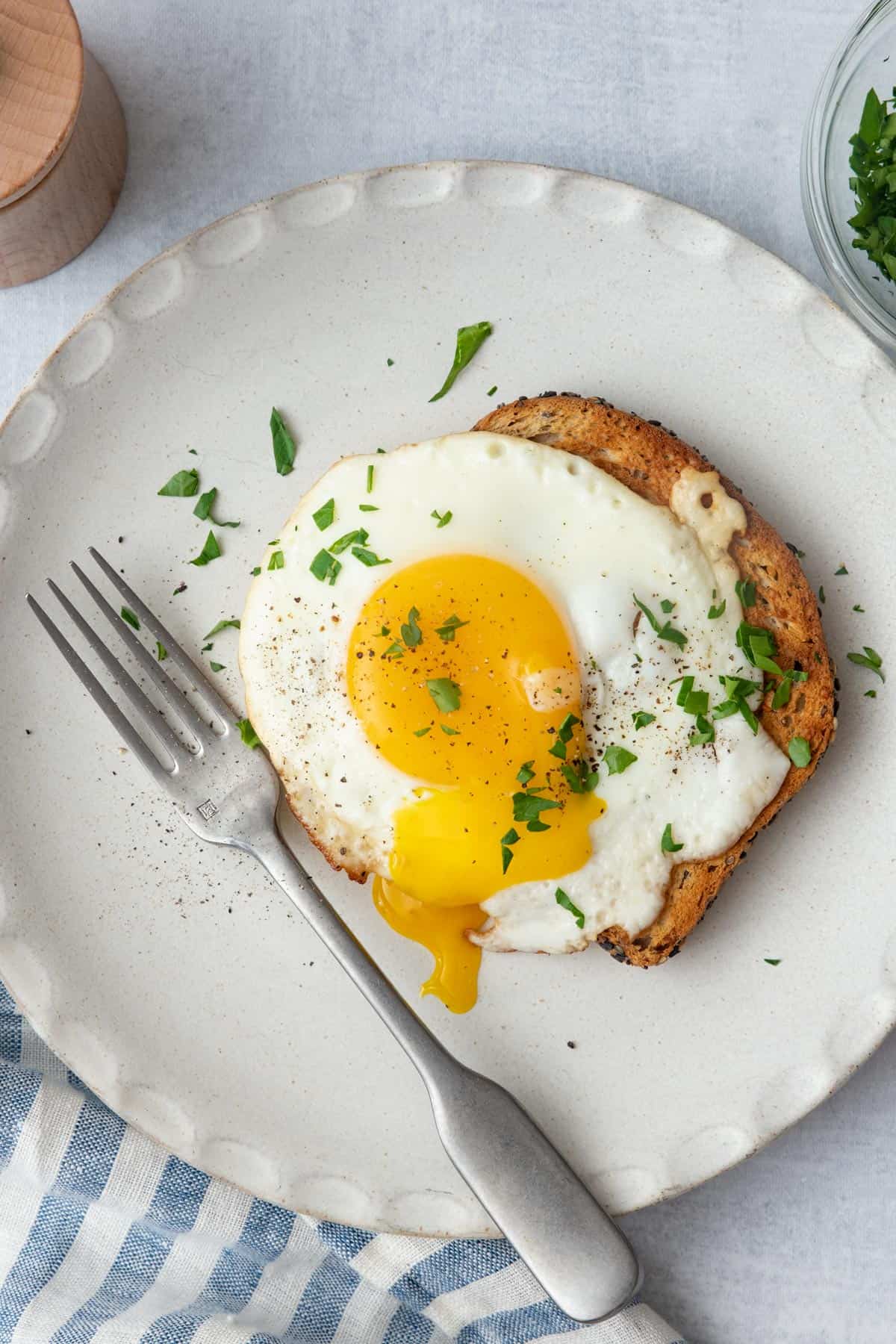How to Fry an Egg
Updated Apr 30, 2025
This easy tutorial will walk you through how to fry an egg in 4 different ways: sunny side up, over easy, over medium, and over hard.
This post may contain affiliate links. Please read our disclosure policy.
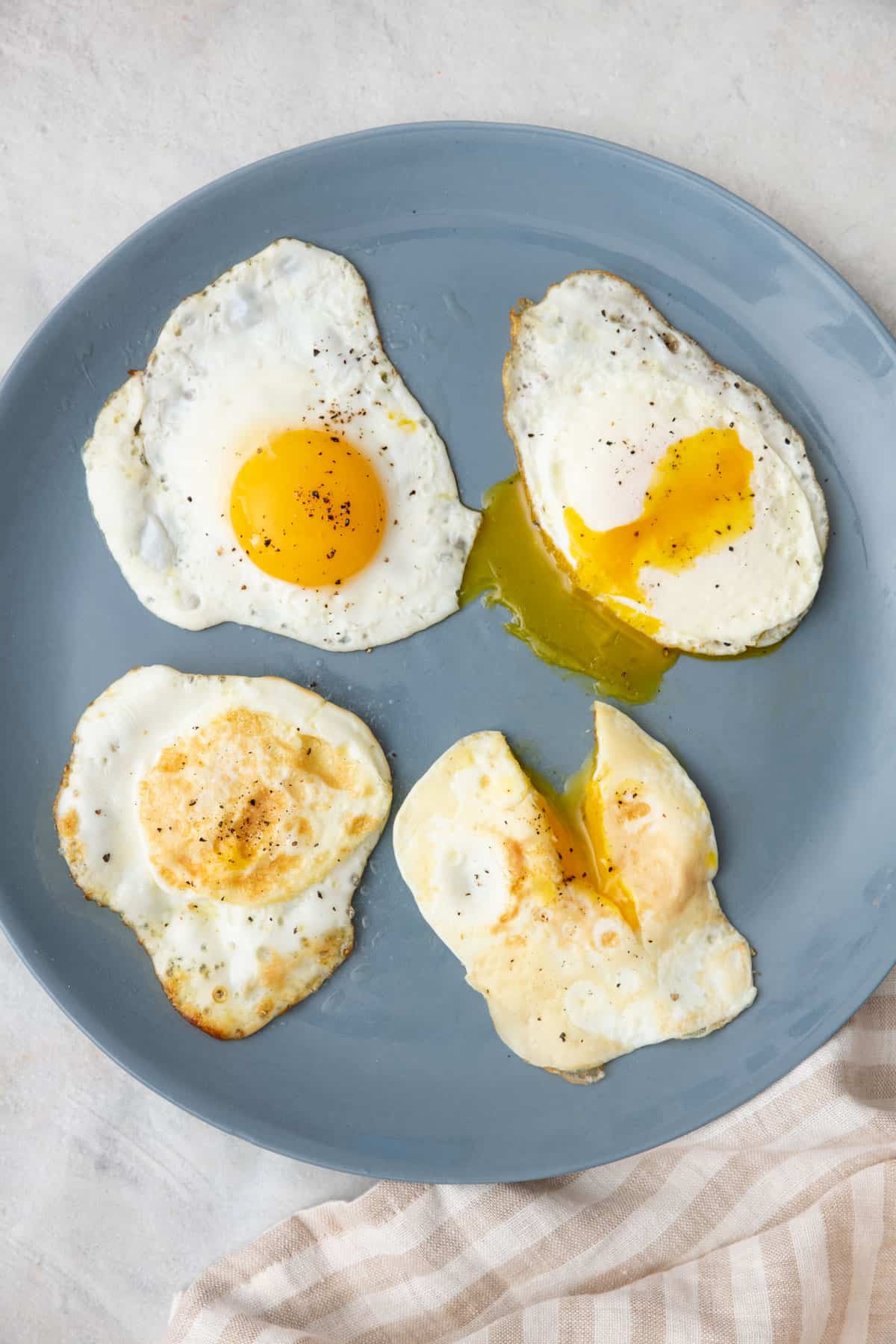
Jump to Section
Frying an Egg is Not as Hard as it Seems!

Frying an egg sounds simple, but getting it just the way you like takes a little practice. I used to second guess when to flip it or how long to leave it in the pan, but once I got the hang of it, I realized it’s one of those basic things that’s really useful to know.
Whether you’re into sunny side up, over easy, or cooked all the way through, this is how I fry eggs at home, nothing crazy, just a few small steps that make a big difference.
Happy Cooking!
– Yumna
What are the Different Styles of Fried Eggs?
- Sunny Side Up Eggs: An egg is fried on one side only and never flipped. The yolk will be liquid and the whites will be barely set.
- Over Easy Eggs: An egg is fried on one side, then flipped and cooked briefly for runny yolks and soft whites.
- Over Medium Eggs: An egg is fried on one side, then flipped and cook slightly longer than over easy for jammy yolks and hard whites.
- Over Hard Eggs: An egg is fried on one side, then flipped and cook until the yolks and whites are fully cooked.
How to Fry an Egg (Video Tutorial)
How to Fry an Egg 4 Ways
Remember that each fried egg style will have a slightly different cook time varying from about 2 minutes up to 5 minutes.
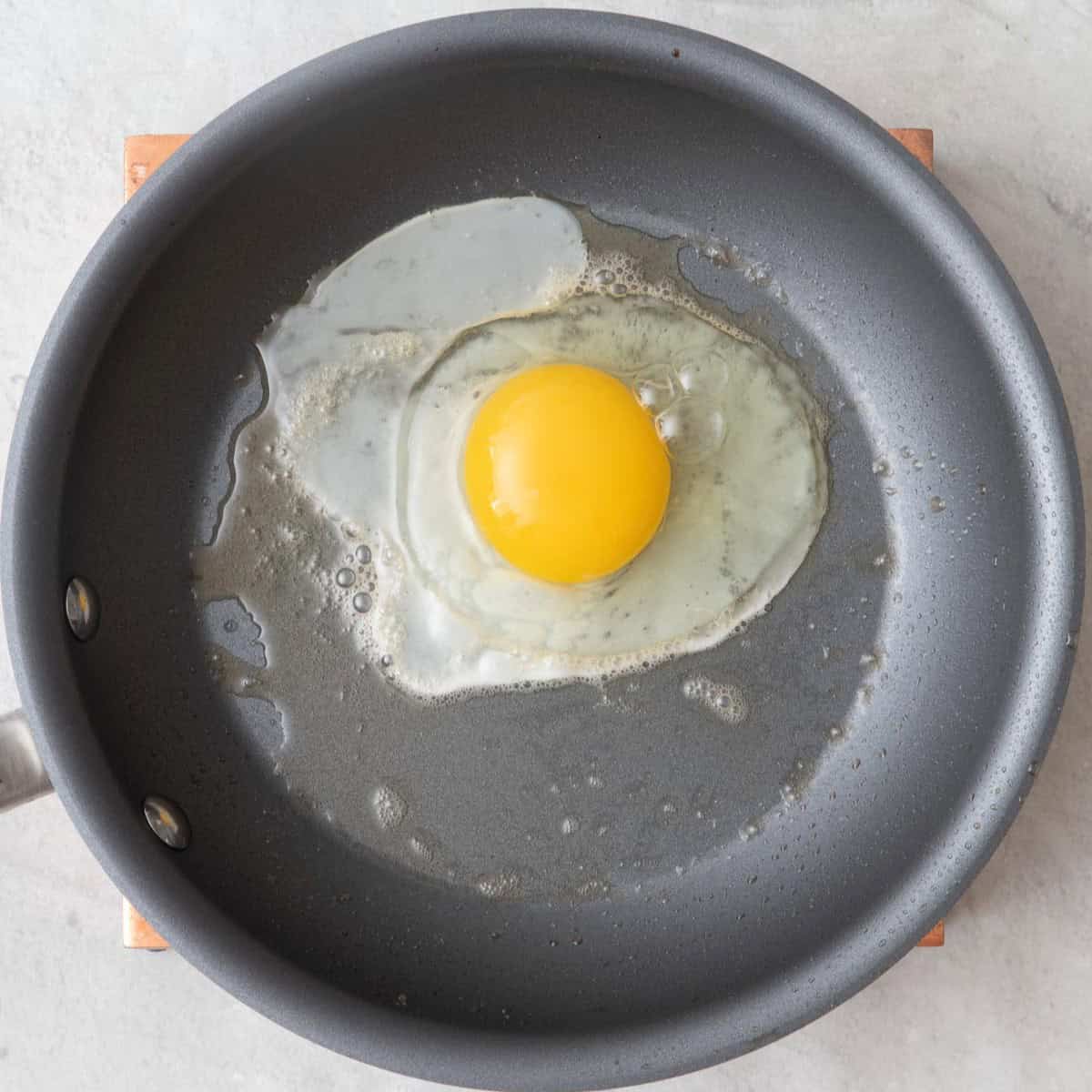
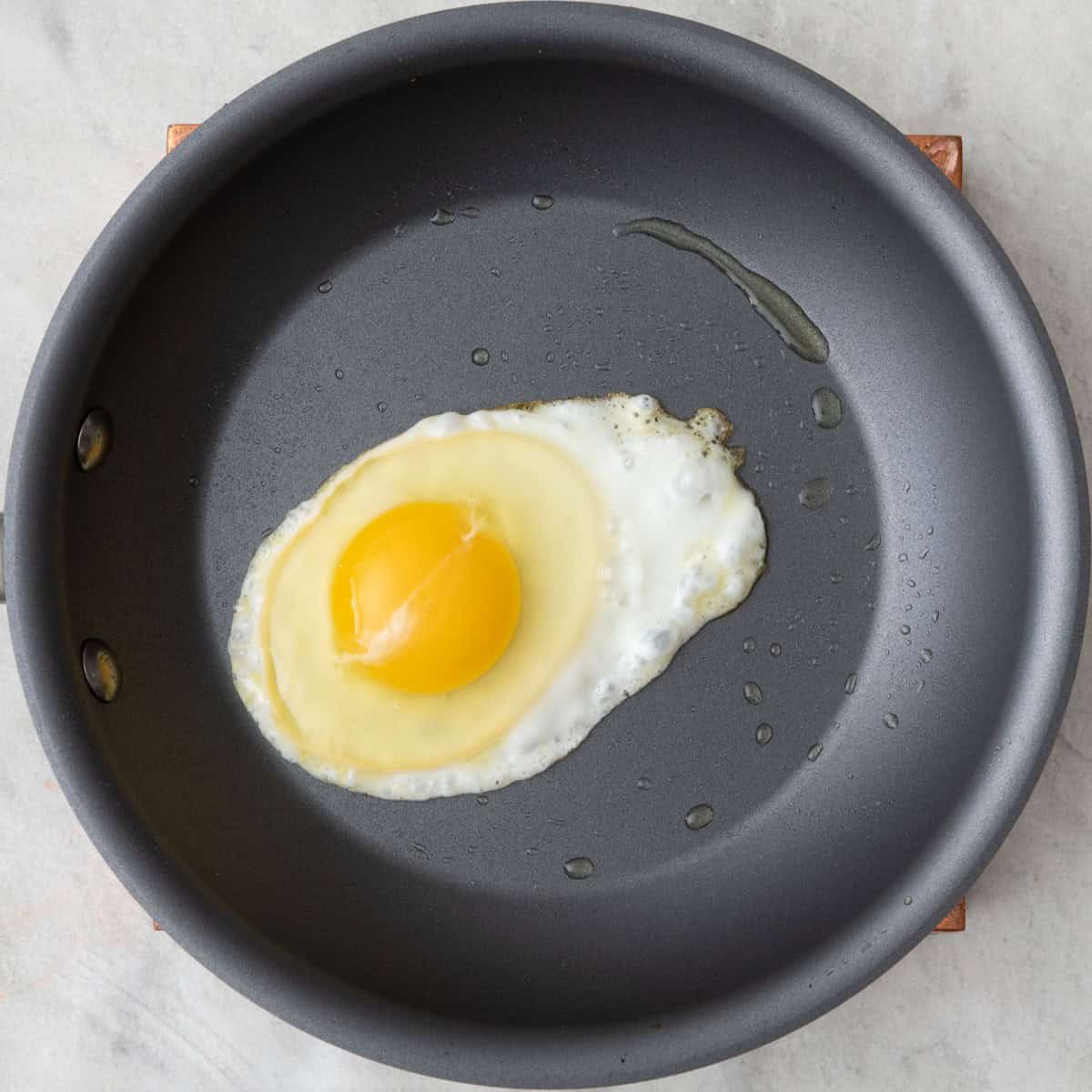




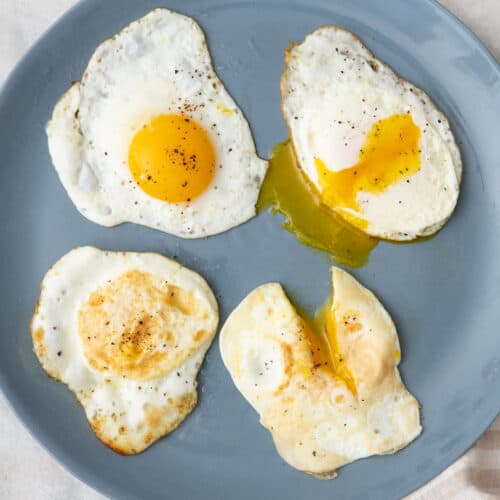
How to Fry an Eggs Recipe
Video
Ingredients
- 1 teaspoon butter
- 1 large egg
- Salt and pepper to taste
Instructions
- Heat butter in a small non-stick or stainless steel skillet over medium-high until melted and swirl the skillet to coat the bottom.
- Crack the egg into the frying pan and immediately lower heat to medium-low. Cook until the whites are set for each egg cook: about 1 ½ – 2 minutes for over easy, 3 minutes for over medium and sunny side ups, about about 5 minutes for over hard.
- For sunny side up, remove from heat when the whites are set but the yolk is still runny.
- For over easy eggs, carefully flip and immediately remove from heat when the yolk and egg whites are still runny
- For over medium eggs, carefully flip and continue cooking until the whites are cooked and yolk appears somewhat set, but jiggly in the middle, about 1 more minute.
- For over hard eggs, carefully flip and continue cooking until the whites are cooked and yolks appear fully set, about 3 more minutes.
- Season with salt and pepper and enjoy immediately.
Equipment
Notes
Nutrition
Nutrition information provided is an estimate. It will vary based on cooking method and specific ingredients used.
If you found this tutorial for How to Fry an Egg helpful or if you try any recipe on Feel Good Foodie, then don’t forget to rate the recipe and leave a comment below!
Recipe Tips
- Try it in a stainless steel skillet. You don’t have to cook eggs in a non-stick skillet. You can use a stainless steel one. The key is to make sure the pan is heated completely and to use more oil than you would with a non-stick skillet. I recommend 2 teaspoons oil per egg.
- Use a really slim spatula or two if needed. The key to not disturbing the yolk, especially for sunny side up eggs or over easy eggs, is to handle the egg with care. I find that a sturdy slim spatula or fish spatula does the trick.
- Lid the pan instead of flipping. My quick way to fry eggs without flipping them over is to simply cover the pan with a lid. You can add a tablespoon of water if you’d like, but just the steam from the moisture of the eggs will help to finish cooking the eggs without worrying about flipping. This cooking method is also referred to as a steam-basted egg.
- Make sure the butter/oil is hot before dropping in the egg. Even with a nonstick skillet, you’ll want the butter or oil to be heated first. This will allow the egg to cook quickly and prevent it from sticking.
- Switch up the fat. If you like a crisp egg, use oil. If you prefer a richer flavor, use butter.
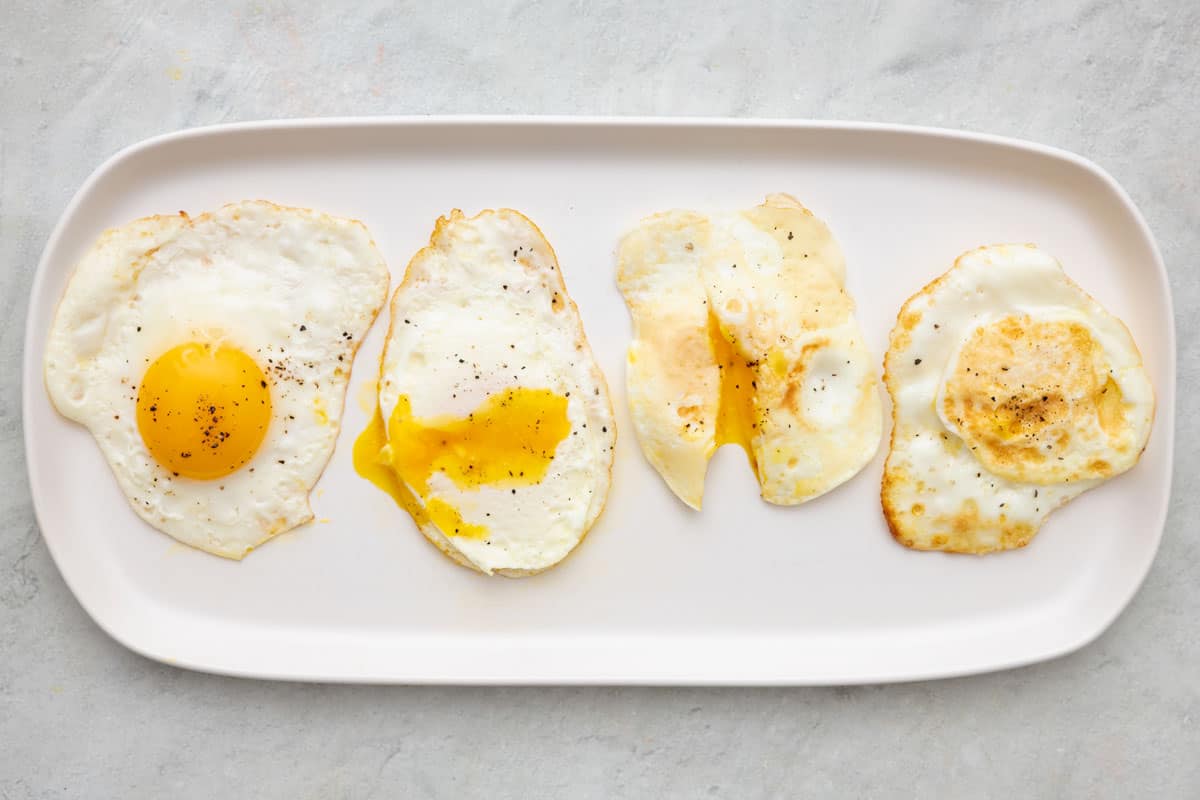
Serving Ideas
Recipe Help & FAQs
The only egg I suggest storing for reheating is over hard. It won’t be easy to reheat any other types of fried eggs because they will need to reach 165 degrees to consume safely and will overcook. You can store them up to 1 day in the fridge.
To reheat fried eggs, microwave in 2 (15-second) intervals, flipping once. Alternatively, heat a skillet with just a bit of oil or butter and heat through.
Yes! Drop 2 eggs into the pan per person if that’s what you prefer. The trick will be flipping both eggs at the same time. Carefully use your spatula to lift and roll the eggs over. If you’re feeling adventurous, learn how to flip an egg without a spatula! When the eggs are ready to flip, lean the pan forward, where the eggs settle on the side edge of the pan. Then, flick your wrist in a forward-up-backward motion to flip the eggs over. It’s a fun technique to learn, and you may break a few yolks along the way, but you’ll be flipping eggs like a pro in no time!
If you’ve cracked your egg in the pan and a piece of the shell fell in, don’t fret! Take a part of the broken shell and gently lift the piece out of the pan. It will stick right to it for easy removal! To prevent any shells from being cooked into the egg entirely, crack the eggs in a small bowl and then transfer them to the pan.
